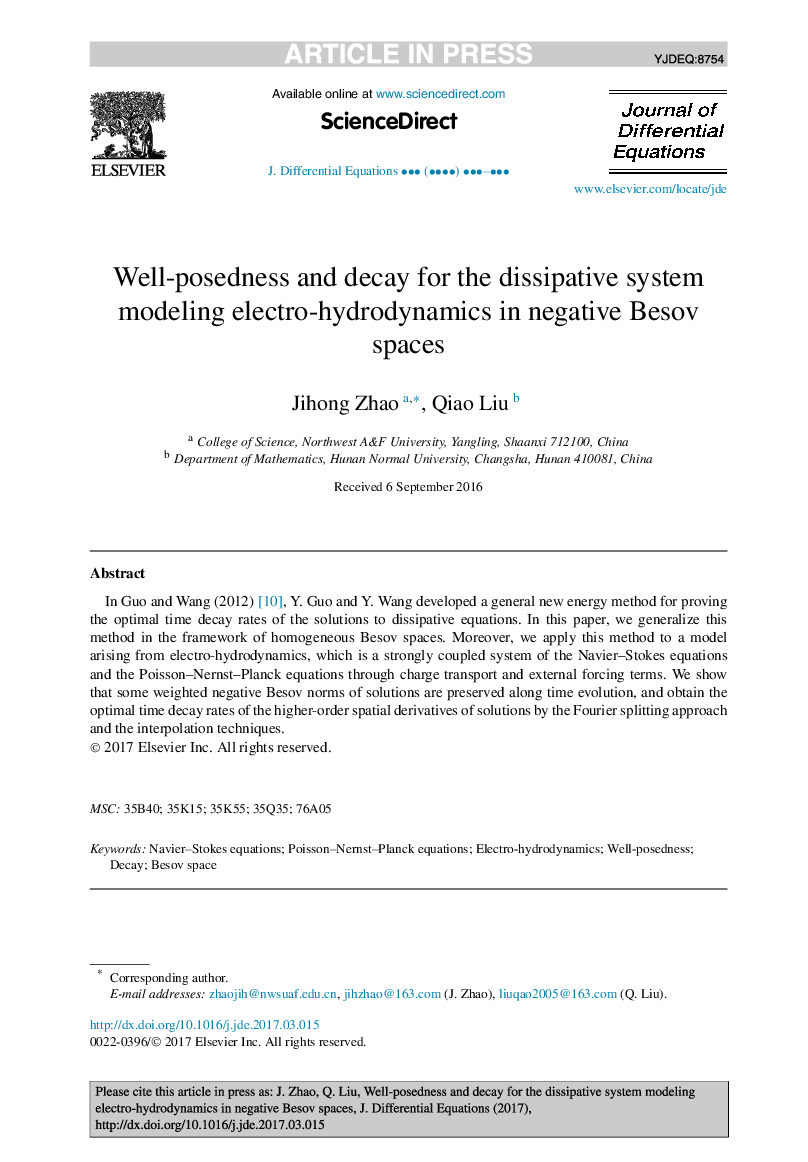| Article ID | Journal | Published Year | Pages | File Type |
|---|---|---|---|---|
| 5774234 | Journal of Differential Equations | 2017 | 30 Pages |
Abstract
In Guo and Wang (2012) [10], Y. Guo and Y. Wang developed a general new energy method for proving the optimal time decay rates of the solutions to dissipative equations. In this paper, we generalize this method in the framework of homogeneous Besov spaces. Moreover, we apply this method to a model arising from electro-hydrodynamics, which is a strongly coupled system of the Navier-Stokes equations and the Poisson-Nernst-Planck equations through charge transport and external forcing terms. We show that some weighted negative Besov norms of solutions are preserved along time evolution, and obtain the optimal time decay rates of the higher-order spatial derivatives of solutions by the Fourier splitting approach and the interpolation techniques.
Keywords
Related Topics
Physical Sciences and Engineering
Mathematics
Analysis
Authors
Jihong Zhao, Qiao Liu,
